
On this month's Morbidly Fascinating Page:
Debunking the Loch Ness Monster, the Wem Ghost Girl, the Time Traveler, Bigfoot, and other photographs of paranormal things
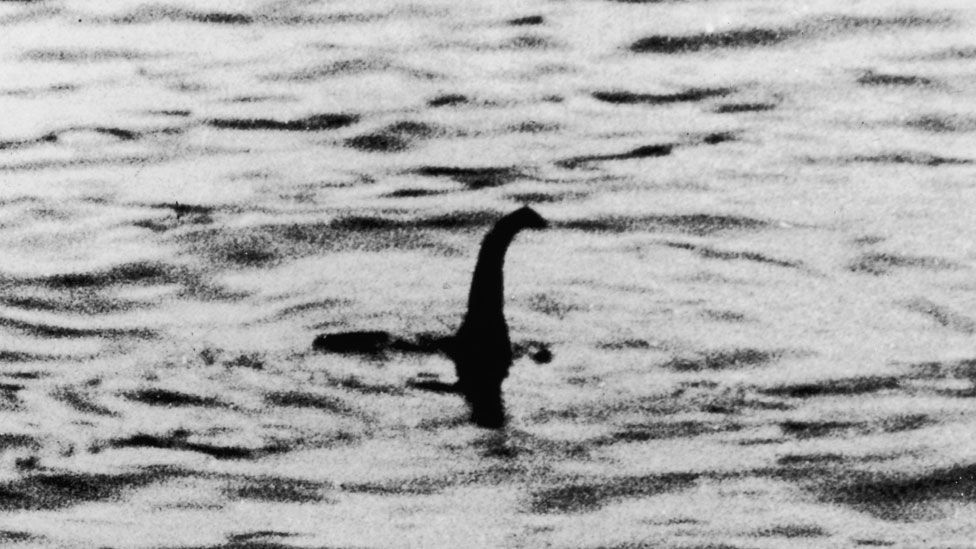
Loch Ness Nessie
In what is probably the most famous mysterious photograph of all time is the 1934 image of the Loch Ness monster "Nessie" taken by a London physician named R. Kenneth Wilson.
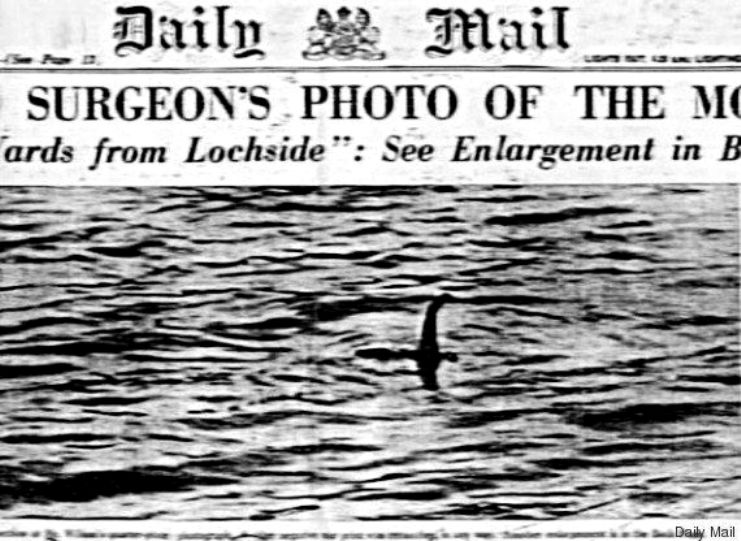
The surgeon brought the photo to UK Daily Mail which published it on their front page on April 21, 1934.
So, what was this photo, exactly? Here's the explantion:
60 years after the photo was first published, newspapers around the world reported the claim that the "surgeon's photo" was a fake, part of an elaborate plot to dupe the Daily Mail. The man behind the story was a former English art teacher named Alastair Boyd, who had become an avid student of Loch Ness lore after he and his wife had had their own sighting of a large animal in the loch in 1979. Years later, a friend of Boyd's named David Martin discovered an old newspaper clipping in which Ian Wetherell (the son of Marmaduke Wetherell of hippo foot fame) claimed the surgeon's photo was a hoax. The article had attracted little attention when it was published in 1975, but two details caught Boyd's eye.
First, Wetherell said the plot had involved a man named Maurice Chambers—the very same man that Dr. Wilson said he had driven up from London to visit in 1934. Second, Wetherell mentioned that the surgeon's photograph included the scenery of Loch Ness in the background. In fact, the familiar Nessie photo includes only the protruding neck and the water around it. Boyd knew that the original photo had included a bit of the far shoreline in the background, because he had rediscovered the uncropped version in the late '80s. But that full photo had been published only once, in 1934, and does not seem to be available today. But how could Wetherell have known this detail about the scenery? "Either he had a very long memory, or he took the picture," Boyd says.
Ian Wetherell died by the time Boyd and Martin read the article, but they were able to track down his step-brother, Christian Spurling, in the south of England. Spurling, 93 and near death, confessed. Unhappy with the way he was treated by the Daily Mail after the hippo foot fiasco, Duke Wetherell had set out to get his revenge, enlisting his son and step-son in the plot. First Spurling built a model monster by grafting a head and neck onto the conning tower of a toy submarine. Then Wetherell and his son Ian drove up to the loch and staged the photograph, taking care to include the actual Loch Ness scenery in the background. Finally, to conceal his own role in the hoax, Wetherell persuaded Dr. Wilson, through their common friend Chambers, to have the photo developed and sell it to the Daily Mail as his own. The plot worked better than any of them could have imagined.
See more HERE
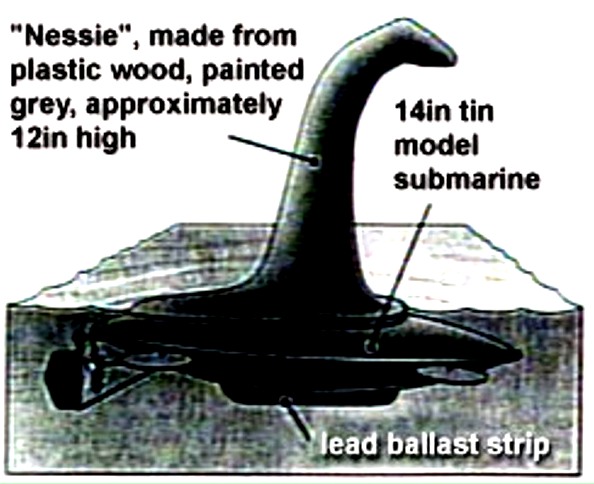
The Wem Ghost Girl
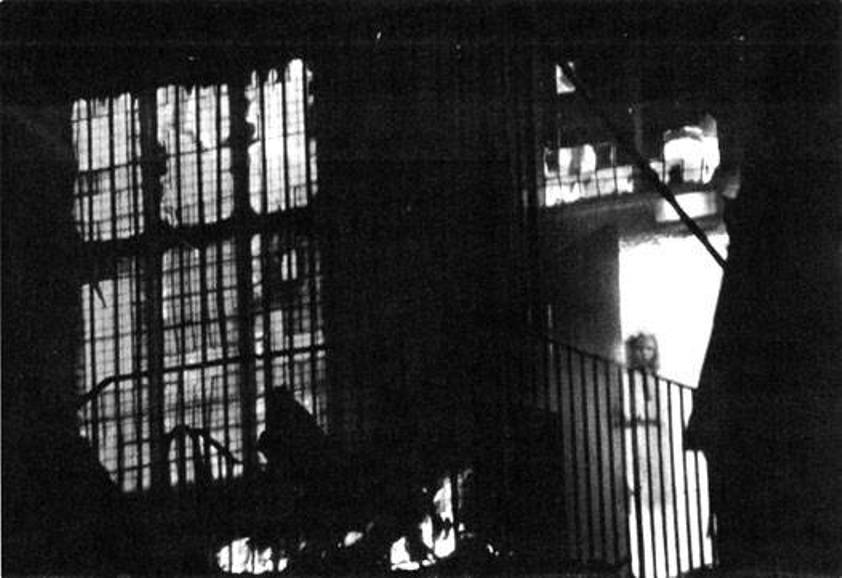
A photograph that supposedly shows the ghost of a schoolgirl standing in a blazing building was passed around the internet.
An amateur photographer, Tony O’Rahilly, took the picture while photographing a fire that destroyed Wem Town Hall in Shropshire on November 19, 1995.After developing his film, he claimed that he had captured an image of a girl wearing old-fashioned clothes standing amid the flames staring into the camera lens.
Mr O’Rahilly, who passed away, always denied doctoring the photograph — known as the 'Wem Ghost' — which made headlines around the world.
Locals even claimed that it was an apparition of 14-year-old Jane Churm who accidentally set fire to the town hall in 1677.
Mr O’Rahilly died in 2005 and had always insisted that his photograph was genuine.
However, 77-year-old Brian Lear spotted a postcard printed in the Shropshire Star’s Pictures from the Past section that shows a street view of Wem in 1922 and a little girl standing in the doorway of a shop who bears an uncanny resemblance to the so-called Wem Ghost.

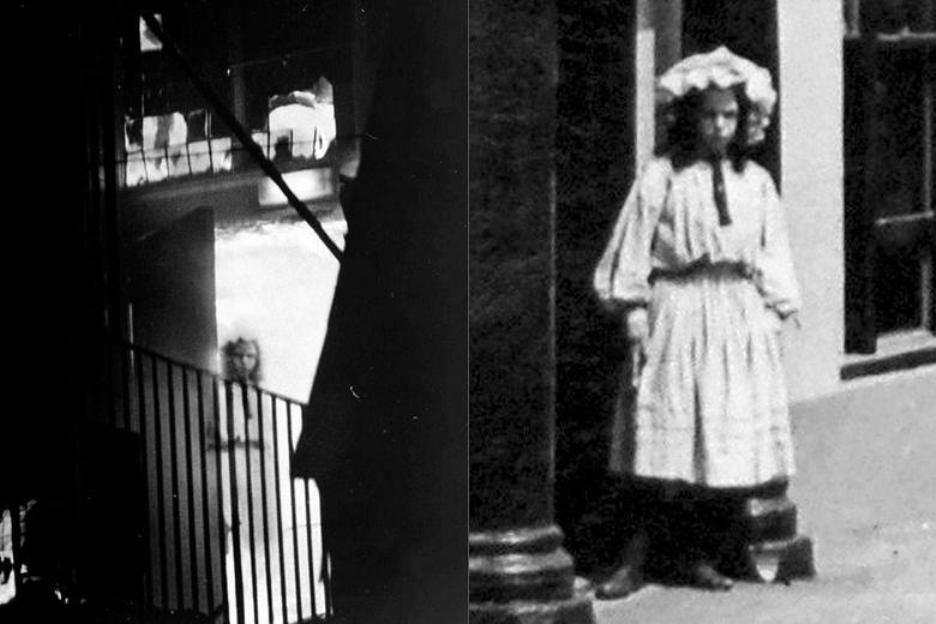
Mr Lear said: ”It is interesting to compare the two pictures. I was intrigued to find that she bore a striking likeness to the little girl featured as the Wem ghost. Her dress and headgear appear to be identical.”
So it appears that the mystery has been solved once and for all.
To learn more, go HERE and HERE
The ghost-boy in the curtains on the set of the movie "Three Men and a Baby"
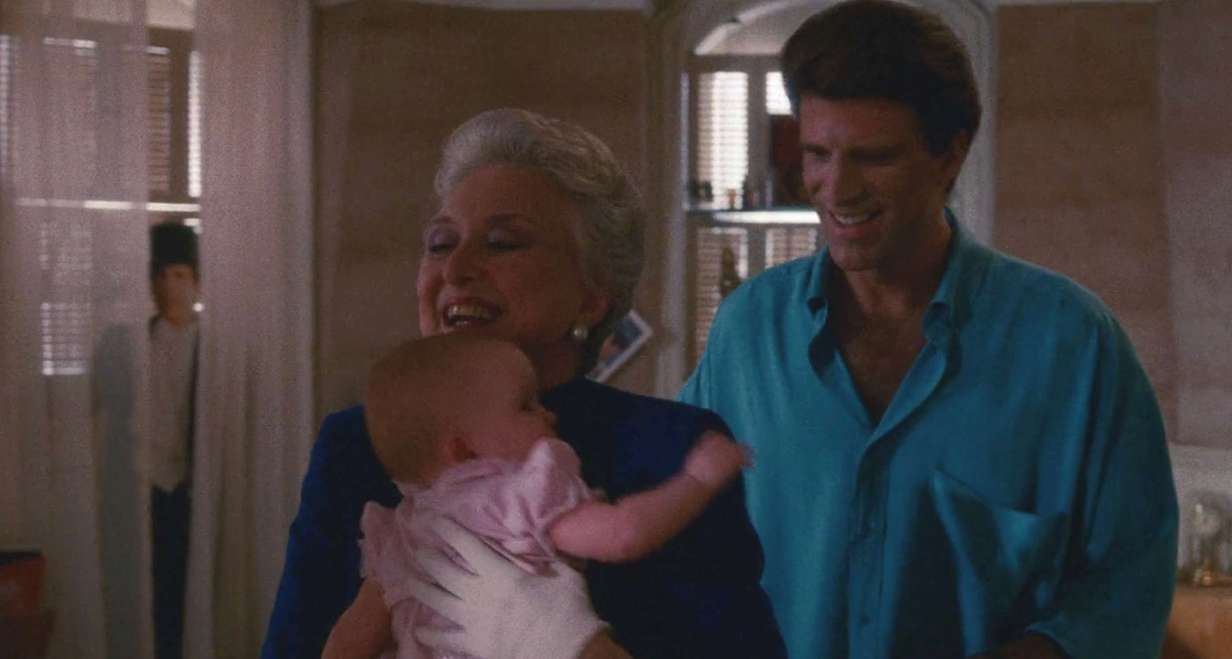
The infamous “ghost boy” image in the 1987 comedy film Three Men and a Baby appears in a window when Jack Holden (Ted Danson) and his mother (Celeste Holm) are walking through the house Jack shares with his two buddies. As Mrs. Holden plays with the baby girl who was left in the three men’s care, a human figure can be glimpsed standing behind the curtains of a background window at the left-hand side of the screen.
A rumor has persisted for several years that this figure is the eerie image of a boy who was killed in the house where this scene was filmed.
The most common form of this rumor claims that a nine-year-old boy committed suicide with a shotgun in the Three Men and a Baby house, a detail apparently inspired by the jagged black outline created as the curtains move away from in front of the figure’s left-hand side, with the black portions of the figure forming an outline that resembles a long gun standing on its end, barrel down.
As usual, the truth is much more mundane. The figure behind the curtains is a “standee” (a stand-up cardboard cutout used for advertising displays) of Ted Danson, dressed in a top hat, white shirt, and tails, that was left in front of a window on the set and thereby “sneaked” into the background of one scene.
The standee prop was created as part of a story line involving a dog food commercial in which Danson’s character (an actor) appears, but references to the figure were cut from the finished version of the film. (The standee shows up once more in the film, as Ted Danson can be seen standing next to it when the baby’s mother comes to reclaim her child.).
The figure in the window looks slightly different in appearance from the standee shown later in the film because the distance and angle of the shot make it appear smaller, and the curtains obscure its outstretched arms.
All indoor scenes for Three Men and a Baby were shot on a Toronto soundstage; no actual residential structures were used for interior filming.
Actor Tom Selleck discussed this legend with Tonight Show host Jimmy Fallon in February 2017.
See more HERE
The Brown Lady of Raynham Hall
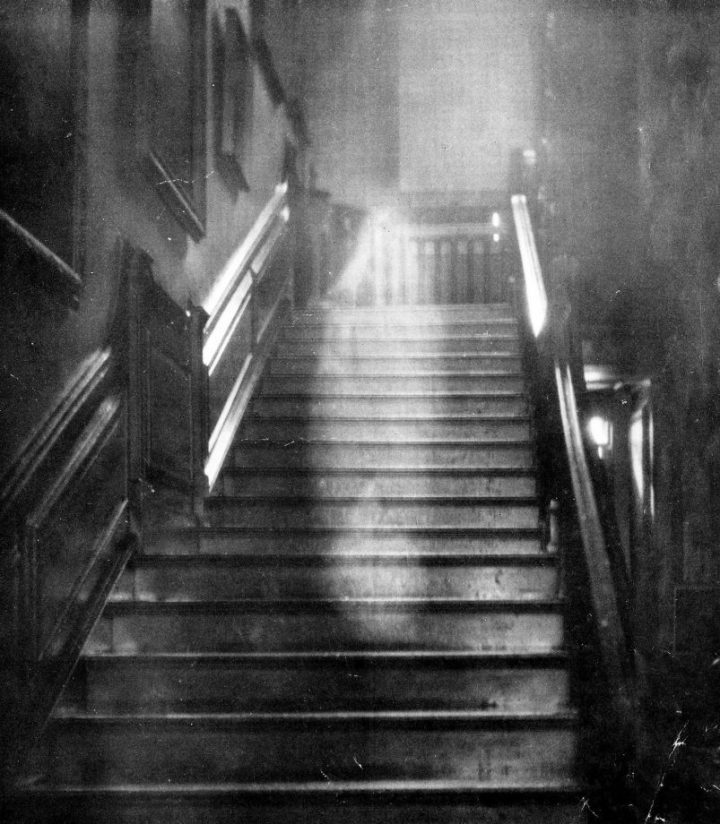
In life, she was a notorious society beauty. Dorothy Walpole, sister of Sir Robert, Britain's first Prime Minister, scandalised Georgian society by having an affair with a penniless lord before marrying an older widower - and dying, aged 40, in mysterious circumstances. A portrait of Lady Dorothy is below.
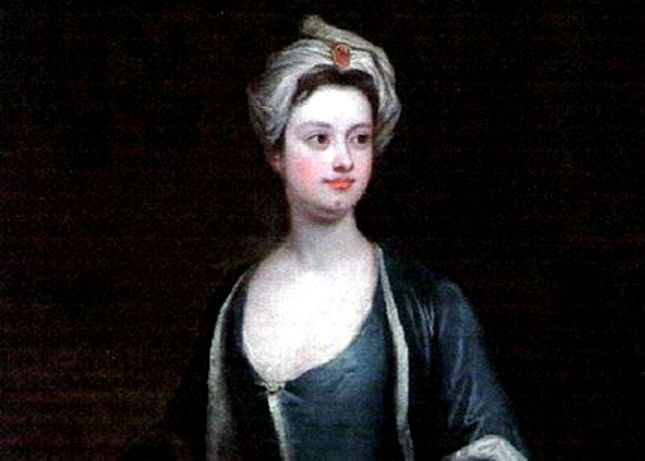
Her infamy spread around the world in 1936, more than 200 years later, when the "ghost" photo was published in Country Life Magazine.
The photograph that gives us the lasting image of the Brown Lady was not taken by an investigator hunting for the woman’s apparition, but was the work of Captain Hubert C Provand, a photographer working for Country Life magazine. He and his assistant, Indre Shira were photographing the Hall for a general article and seemingly had no intent to cover the spectral legend.
After taking an initial photography of the Halls grand staircase, they were making preparations for a second when Shira saw the gradual formation of a “vapoury form gradually assuming the appearance of a woman”.
Upon Shira’s instruction, Provand quickly took another photograph and, upon development, the infamous image of the ‘Brown Lady’ was revealed.
Instead of the supposed planned article on Raynham Hall, Provand and Shira’s experience, complete with photographs, was printed in Country Life on December 26th, 1936.
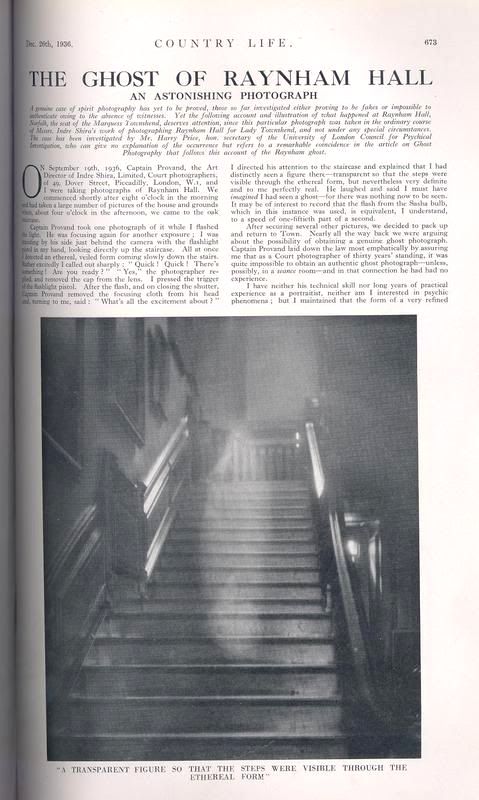
Ever since publication, the image has been used as proof of ghost existence and visitation and has been subject to investigation by several high-profile paranormal sceptics. Generally, accounts of the images’ legitimacy are far more prolific in print, as they grab our imaginations far stronger than explanations by sceptics.
Nonetheless, there are many available explanations for the ghostly image; many cite a double exposure or smear of grease on the lens. Generally, consensus between critics is that the image is not of a spectre, but of either a living figure concealed beneath a sheet, or a simple superimposition of a draped Madonna statue. Many critics have said that the image of the ghost appears to have its hands raised in prayer and the square stand or mount beneath it is more than visible when one examines the shadows! In short, the 1936 image is generally regarded to be little more than a composite of two images.
Read more HERE
The Solway Firth spaceman
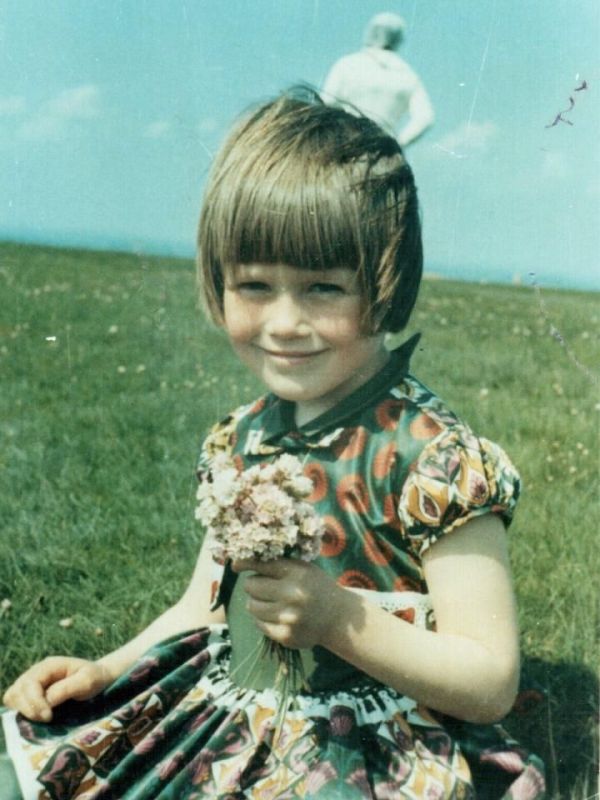
On a bright summer's day in 1964, a Carlisle fireman took a photo of his daughter that created headlines around the world.
"We went on a normal outing and picked our spot," Jim Templeton recalled in a BBC interview before his death in 2011.
"We sat down and I said, 'Now I'll get some photos of you with the new dress on', never expecting this to happen."
By "this" he meant worldwide media attention and decades of debate over the mysterious figure shown behind his daughter, Elizabeth.
The film company Kodak said the photo was not altered and even offered a reward to anyone who could prove the photo was faked. It was never claimed.
So was it an extraterrestrial spaceman in the photo behind Elizabeth?
Not so fast.

Dr Clarke, who met Mr Templeton in 2002, thinks it unlikely.
"I came away absolutely convinced he was telling the truth and couldn't explain it himself, although I was less convinced about his 'Men in Black' story. Whoever it was who visited him, I don't think they were from the government."
However, the spaceman, Dr Clarke says, is almost certainly not anything of the sort.
"One of the other stills [taken that day] shows Jim's wife who, according to him, was standing behind him when he took the photo of Elizabeth," he said. "I think for some reason his wife walked into the shot and he didn't see her because with that particular make of camera you could only see 70% of what was in the shot through the viewfinder."
Proof of time travel?
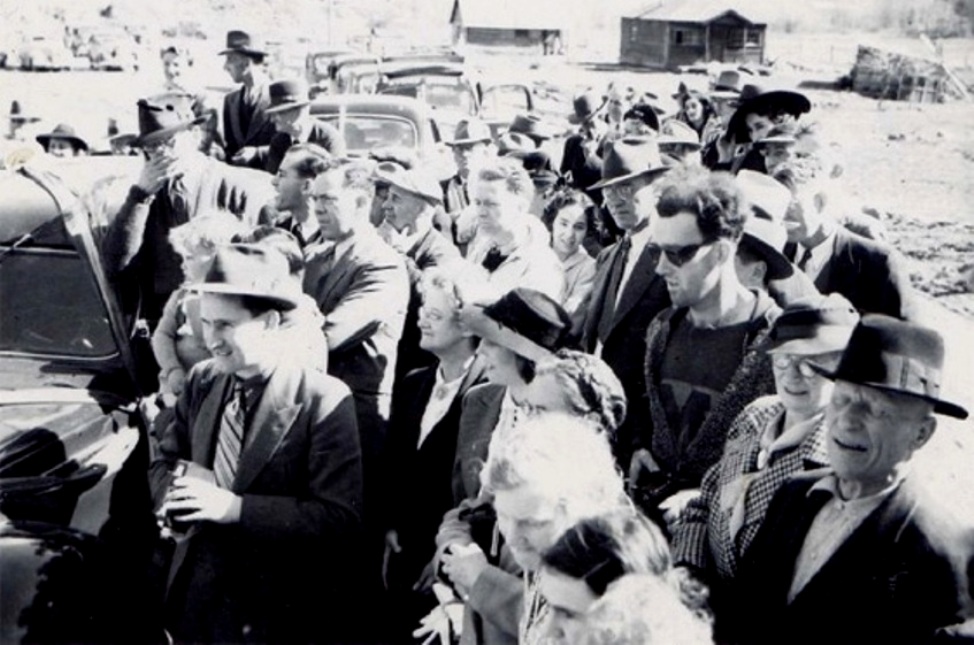
A photograph supposedly showing a “time-traveling hipster” has been circulating on the Internet since at least 2010. Although the image in question is real and unaltered, the man singled out in the picture for his supposedly unusual appearance is not a time traveler.
The image was first made available to the public in 2004 when it was featured in the Barlorne-Pioneer Museum’s exhibit “Their Past Lives Here.” The photograph was taken in 1941 at the reopening of the South Fork Bridge in Canada, and when the museum digitized and placed online the collection that included this picture in 2010, some Internet users noted that a man in the photograph appeared to be dressed far too modern for 1940.
The idea that the man in the photograph is a time traveler hinges on three items he is seen wearing or holding that appear to be of too modern a vintage for the 1940s: a logo t-shirt, a small portable camera, and wrap-around sunglasses. But all of those items were readily available in the 1940s.
His t-shirt, for instance, bears the logo of the Montreal Maroons, a temporally appropriate hockey team that played in the NHL from 1924-1938 as seen here:
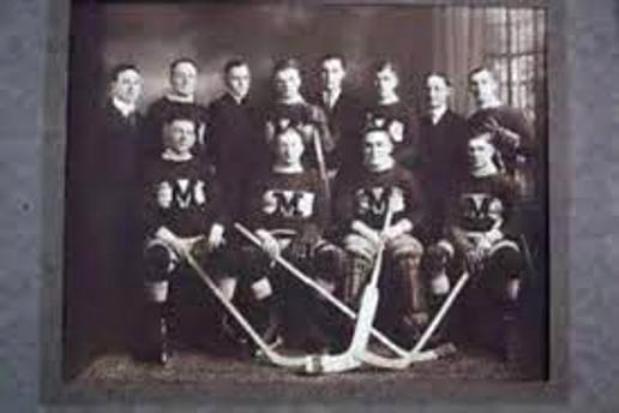
Glasses with protective side shields were also available in the 1940s. While this style of eyewear was not yet widespread, it is more plausible that the photograph shows a man of his time with unusual fashion sense rather than a time traveler, The final nail in this time traveler’s coffin comes to us courtesy of Kodak. While many viewers assumed that the camera that the man is shown holding is simply too small to have existed in the 1940s, Kodak did in fact make several portable cameras that small which were available beginning in 1941.
Conclusion: The man in the image may look out of place at first glance, but nothing about his appearance was impossible for the time the photograph was taken.
Source: Snopes
Pilot with selfie stick
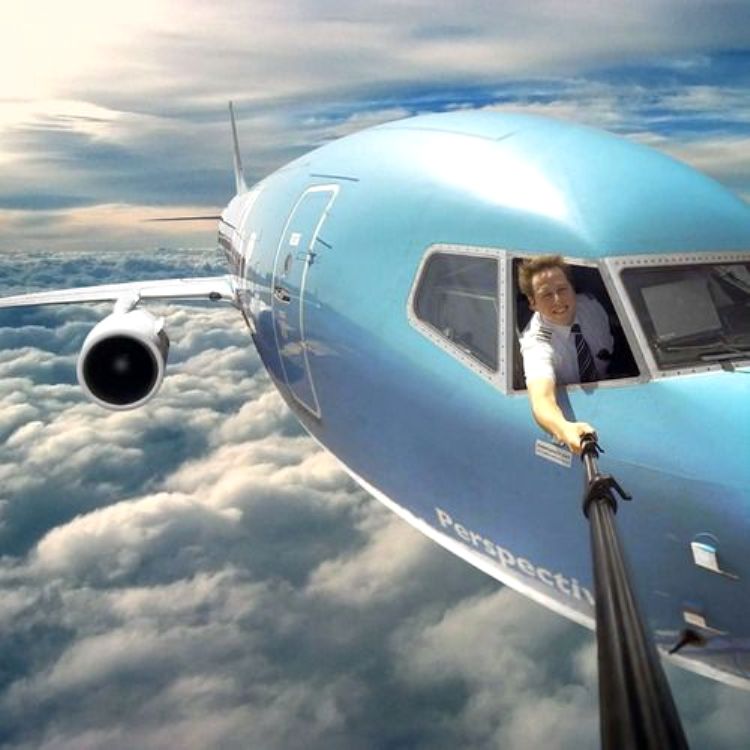
The internet screams: "A commerical pilot has been suspended for taking a selfie while flying a plane. He was the only pilot in the cockpit."
You are right to be skeptical. In these days of photoshop, this photo has been altered, as witnessed by the original photo below. And this pilot still has his flying license.
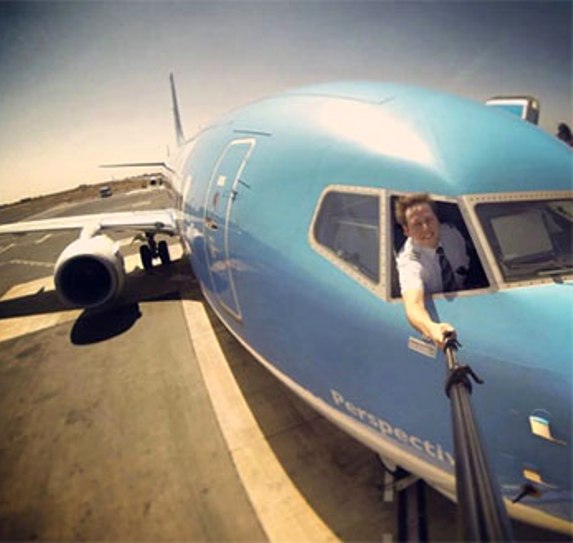
The Cooper Family "falling body" photo
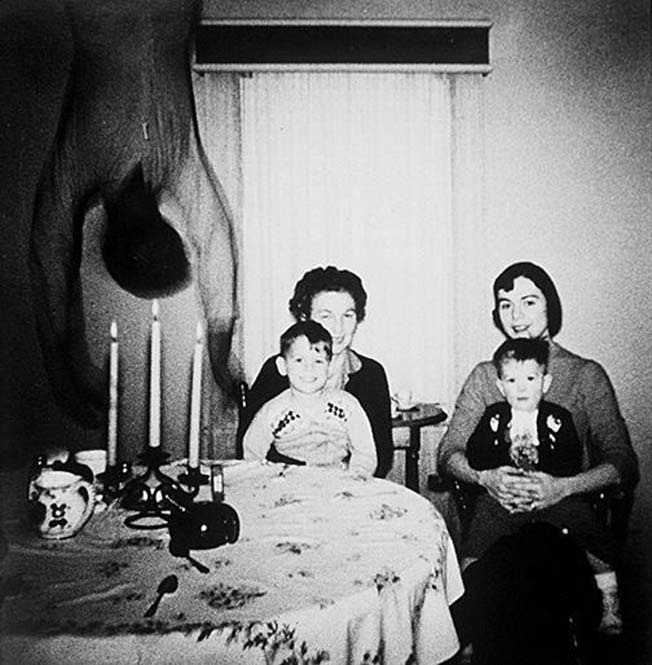
The story goes that sometime in the 1950s the Cooper family of Texas bought an old house and moved into it. On their first night there, the father took a photo of Mom and Grandma posing with the two kids at the dining room table. Everyone was happy and smiling. They were living the American dream.
But when the photo was subsequently developed, they saw, to their horror, that what looked like a body falling or hanging from the ceiling had materialized behind them. It hadn't been there when the father took the photo. So where had it come from? Was it an apparition of a deceased former tenant of the house? No one knew.
Is any part of this story true? No. It's pure fiction, but it's recently become attached to this creepy photo, which has circulated widely online. The story appears to have been invented sometime in 2013. At least, I can't find references to it earlier than that.
But what about the image itself? It's definitely older than the story. So what's the real story behind it?
That's a bit of a mystery. Its original source is unknown. The family looks like they're from the 1950s, but that's just a guess. And various details of the photo suggest that it's been digitally altered, which would indicate a more modern origin.
For instance, there's dark "vignetting" in the corners of the photo. Wikipedia notes that vignetting can be a result of "camera settings or lens limitations," but in this case the vignetting looks too symmetrical, so it's probably an effect created by Photoshop.
Also, the shadow of the falling body falls the wrong way in relationship to the main light source in the photo. This suggests either that the body has been digitally inserted into the photo, or that it got there as a result of a double exposure.
See more HERE
And finally, the famous Bigfoot video (film still below)

The Patterson–Gimlin film (also known as the Patterson film or the PGF) is an American short video of an unidentified subject that the filmmakers have said was a Bigfoot. The footage was shot in 1967 in Northern California, and has since been subjected to many attempts to authenticate or debunk it. The footage was filmed alongside Bluff Creek, a tributary of the Klamath River in Del Norte County in the Six Rivers National Forest.
The filmmakers were Roger Patterson (1933–1972) and Robert "'Bob" Gimlin (born 1931). Patterson died of cancer in 1972 and "maintained right to the end that the creature on the film was real." Patterson's friend, Gimlin, has always denied being involved in any part of a hoax with Patterson.
The Patterson–Gimlin film has seen relatively little interest from mainstream scientists. In 2002, Philip Morris, owner of Morris Costumes (a North Carolina-based company offering costumes, props and stage products) claimed that he made a gorilla costume that was used in the Patterson film. Morris says he discussed his role in the hoax "at costume conventions, lectures, [and] magician conventions."
Morris said that he sold an ape suit to Patterson via mail order in 1967, thinking it was going to be used in what Patterson described as a "prank." After the initial sale, Morris said that Patterson telephoned him asking how to make the "shoulders more massive" and the "arms longer." Morris says he suggested that whoever wore the suit should wear football shoulder pads and hold sticks in his hands within the suit.
As for the creature's walk, Morris said: "The Bigfoot researchers say that no human can walk that way in the film. Oh, yes they can! When you're wearing long clown's feet, you can't place the ball of your foot down first. You have to put your foot down flat. Otherwise, you'll stumble. Another thing, when you put on the gorilla head, you can only turn your head maybe a quarter of the way. And to look behind you, you've got to turn your head and your shoulders and your hips. Plus, the shoulder pads in the suit are in the way of the jaw. That's why the Bigfoot turns and looks the way he does in the film. He has to twist his entire upper body."
Read more HERE